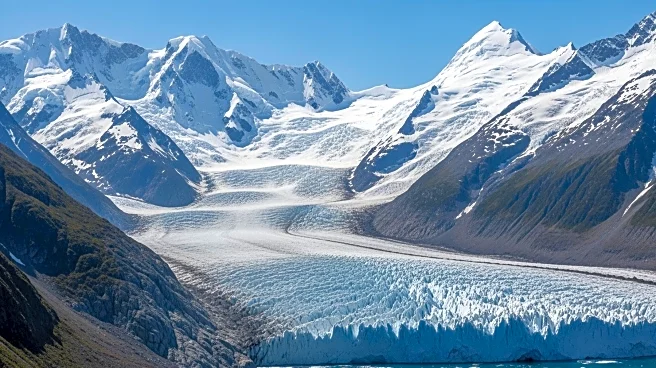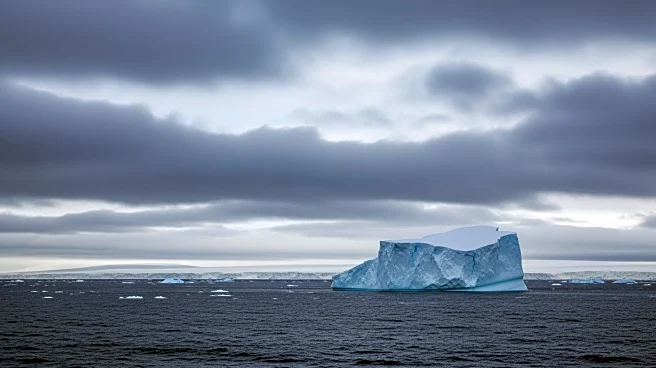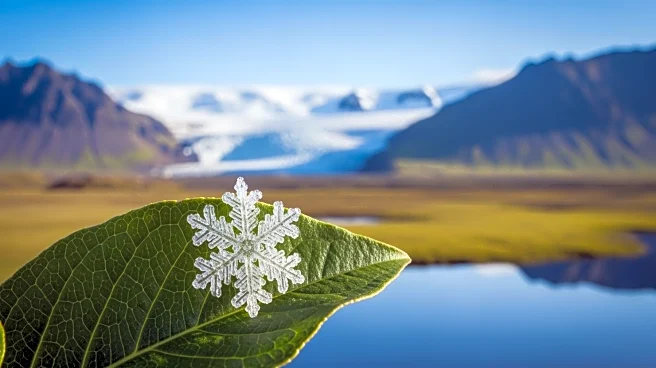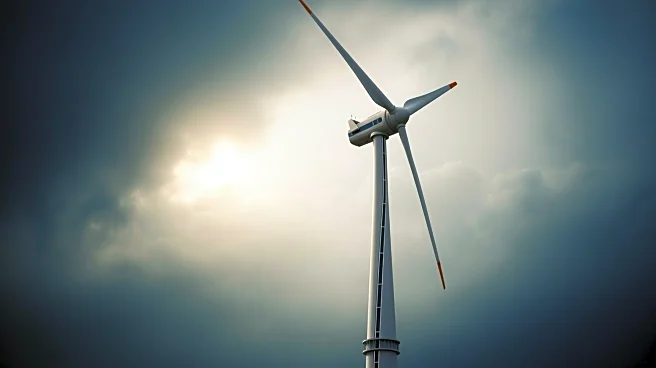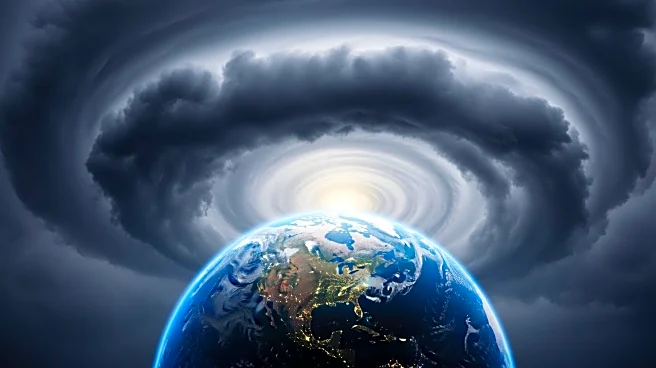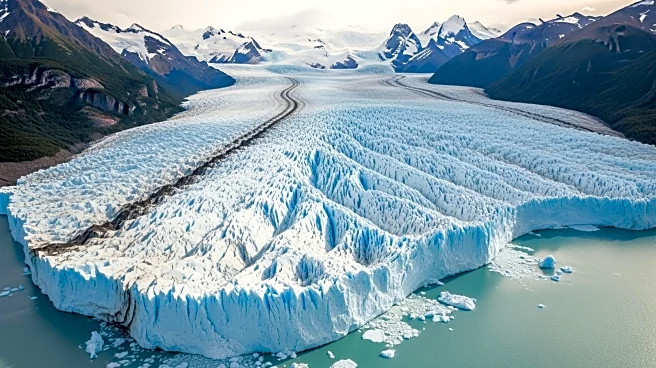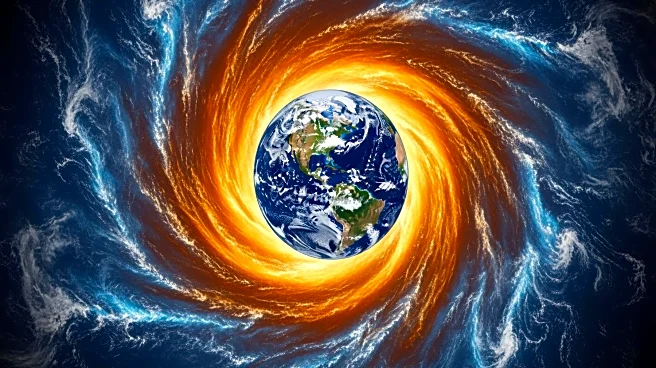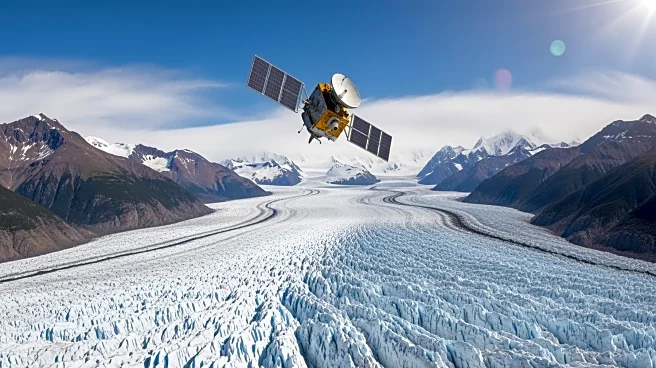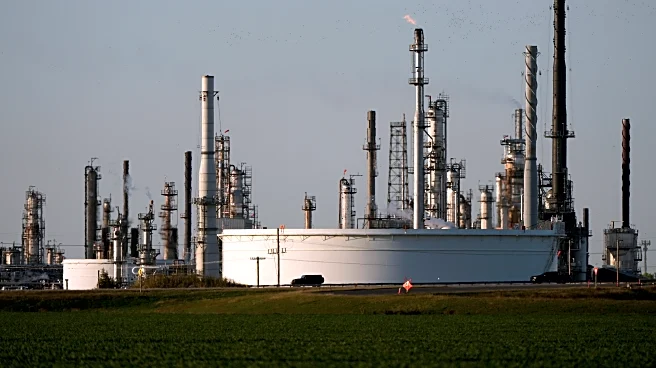What's Happening?
Recent research highlights the significant impact of North Atlantic Ocean natural variability on glacier mass loss in the Northeastern Tibetan Plateau (NTP). The study, utilizing data from 2000 onwards, reveals a pronounced negative trend in glacier mass balance,
with an accelerated loss rate observed from 2000 to 2020. The research identifies a strong correlation between summer temperature increases and glacier mass loss, with the North Atlantic Sea Surface Temperature (NASST) tripole pattern playing a crucial role. This pattern influences atmospheric circulation, leading to warmer temperatures and altered precipitation patterns in the region, which exacerbate glacier melting.
Why It's Important?
The findings underscore the broader implications of oceanic variability on regional climate and glacier dynamics. The accelerated glacier mass loss in the NTP has significant consequences for water resources, as glaciers are critical sources of freshwater for downstream communities. The study highlights the interconnectedness of global climate systems, where changes in the North Atlantic can have far-reaching impacts on the Tibetan Plateau. This research contributes to understanding the drivers of glacier change, which is vital for predicting future water availability and managing the impacts of climate change on vulnerable regions.
What's Next?
Further research is needed to explore the long-term impacts of NASST variability on glacier dynamics and regional climate. Understanding the mechanisms behind these changes can inform climate models and improve predictions of future glacier behavior. Policymakers and environmental managers may need to consider these findings in water resource planning and climate adaptation strategies. Additionally, monitoring and mitigating the effects of climate change on glacier regions will be crucial to safeguarding water supplies and ecological stability.
Beyond the Headlines
The study highlights the complex interplay between oceanic patterns and regional climate, emphasizing the need for integrated climate research. The role of anthropogenic factors, such as greenhouse gas emissions, in amplifying natural variability and its effects on glaciers, remains a critical area for investigation. This research also raises questions about the resilience of glacier-fed ecosystems and communities in the face of ongoing climate change.
